On the Hunt for the World’s Most Spectacular Sky Show
Photojournalist Randall Hyman journeys north to Tromsø, Norway, in search of the northern lights
They come from all corners of the Earth in the dead of winter like confused snowbirds, flying north to Norway instead of south, seeking dark and cold rather than sun and warmth. And they happily pay dearly for it, from $125 for basic one-night tours to $3,000 for luxury packages, just to see the northern lights.
“It’s always been on my bucket list,” a hedge fund manager from Malaysia told me last January as we braved icy winds and subzero temperatures outside our tour bus. She had come for the weekend to experience the aurora borealis. Bleary-eyed and sleep deprived, I had traveled nearly as far that same day from a week-long science conference in the United States, but I wasn’t about to miss one of nature’s most spectacular shows because of a little jet lag.
We had been on a quest for the northern lights all evening outside Norway’s northernmost city, Tromsø, driving empty, snow-covered roads and searching the sky 200 miles north of the Arctic Circle. After more than an hour admiring ghostly moonlit peaks and brilliant stars from a snowy valley on Kvaløya Island, we drove to its icy coast as midnight was fast approaching. A family of Spaniards on the bus eagerly chanted “Vamos a ver la aurora, vamos a ver la aurora,” but for our tour guide, Ricardo Torres of the Arctic Guide Service, the pressure to produce results was mounting. We knew Torres couldn't control nature, but would The Green Lady disappoint?
Torres checked his smartphone constantly for website reports and updates from other guides. He knew that being on the wrong side of a mountain or in a pocket of cloudiness could spell failure. The 20 of us, from eight different countries, were still upbeat, but time was running out. The lights usually peak around midnight, and tours head back to Tromsø by 12:30 a.m.
Parking along a coastal road, we trundled out of the bus in parkas, ski pants and woolen hats, lining up along a rocky ledge overlooking the sea. White-capped waves and mountainous islands were easily visible in the full moon, and a small town on the other side of the fjord punctuated the dark shore with a line of amber lights. After 40 more minutes of frozen fingers and a growing sense of defeat, Torres suddenly pointed skyward at a long, thin green arc forming over the ocean.
A chorus of oohs and aahs and exclamations in several languages greeted the show. As we cheered, Torres set up his tripod, taking portraits of smiling guests beneath the night sky. The lights intensified for half an hour and then slowly dimmed. Wistful but content, we boarded the bus and headed home.
I've seen bigger displays on journeys to Norway, Iceland, Greenland and Canada, but regardless of size, the northern lights never fail to send chills down my spine. At their best, the aurora borealis dazzles the eye with shimmering curtains, arcs and rings of green, red, purple, white and yellow, plummeting from soaring celestial heights and dancing chaotically but gracefully across the heavens. The rapid fluctuations can fill half the sky, creating a supernatural spectacle. It can seem almost spooky—silent yet explosive.
Back at the Arctic Guide Service office in Tromsø at 1:30 a.m., Torres declared, “It was not a bad display. I was expecting a little bit of white, a little bit of faster movement. From my own experience, we get the really big ones every seven or eight days.”
Having worked for the Arctic Guide Service for over two years, during the most active auroral period in a decade, Torres has seen his share of spectacular sky shows. His company, one of Tromsø’s largest northern lights operators, offers everything from basic bus tours like ours to luxury excursions in private cars, complete with a veteran guide, seafood dinner and bottle of champagne. While some countries market the lights with glass-roofed hotel rooms or outdoor ice bars, the people of Tromsø tend toward the safari concept.
“We don’t want to make it a Disneyland experience,” explains Trond Øverås, director of Visit Tromsø, a central marketing and online booking company for regional tour operators. “We want to offer an adventure, a hunt for the lights, taking our guests out into the nature.”
At a latitude of 70 degrees north, Tromsø lies in the sweet zone for the aurorae, which are generally most visible at latitudes from 66 to 71 degrees. The northern lights are so common in Tromsø that companies offer nightly tours from September 15 until as late as April 15, when lengthening daylight finally shuts down the show. Although other Arctic towns around the world offer northern lights excursions, few have Tromsø’s combination of easy access, relatively mild winters, frequency of sightings and ample tourism infrastructure.
It was not always this way: Winter in Tromsø was once a dark, lonely season. An occasional Japanese tour group would catch the flight from Oslo and stay in the Scandic Hotel, away from bright downtown lights. Hotel staff dutifully watched the skies and, at the slightest hint of green, filled the switchboard with wake-up calls. Guests enthusiastically ran outside and admired the celestial light show, then headed for their beds, especially the honeymooners. According to Japanese tradition, conceiving a baby under the mysterious green and red shimmering lights of the aurora borealis promises the child a bright future.
“It started with the Japanese,” says Øverås, “and then around 2005 we were looking for a way to bump up the low season and fill beds. We had these requests from people wanting to see northern lights, and we didn't understand why it was so attractive to them. We always had midnight sun in summer and northern lights in winter. It was just a part of our daily life.”
Taking the hint from the rise in inquiries, tourism gurus began selling tours to see the lights from coastal cruise ships. The turning point came in 2008, when the BBC aired Joanna Lumley in the Land of the Northern Lights, a documentary featuring one of Britain’s favorite actresses pursuing her lifelong dream of seeing the aurorae. Millions viewed the travel special, in which Lumley first goes far north of the Norwegian mainland to the Svalbard archipelago in a failed attempt to see the lights, but finally encounters a spectacular sky show. Streams of tourists began following her trail. In a 2013 Lonely Planet Traveller survey asking Britons to name their top five, lifetime must-sees, the northern lights in Norway took first place handily.
The Tromsø region now has 43 companies featuring the northern lights, serving up guided excursions aboard ships, buses, snowmobiles, dog sleds, skis and even snowshoes. In 2013, for the first time ever, more foreign guests filled hotel beds in winter than summer, tripling 2005 levels. In less than ten years, the high season has dramatically shifted from summer’s endless sunlight to winter’s endless darkness.
The spectacular displays of Tromsø’s long polar night are actually thanks to the sun itself. Aurorae are the result of a cosmic tango between the sun’s upper atmosphere and our own. As our star hurls waves of charged particles into space—called solar winds—the Earth’s protective magnetic field deflects this high-energy, super-heated plasma of electrons and protons around to our night side. Like a cosmic taffy pull, the winds stretch the magnetic field out behind us for several million miles. Every few hours, the magnetic bands snap back toward Earth, propelling plasma particles along polar magnetic field lines. The oscillating magnetosphere ultimately bombards the upper reaches of our atmosphere with energetic charged particles, ionizing and exciting oxygen and nitrogen atoms. Ionized oxygen glows green in high-energy bombardment, and red in low energy. Nitrogen shimmers violet blue, and the mix of ionized and excited gases creates a rainbow of colors.
Myths and tales about the aurorae persist. According to Norse mythology, the lights are linked to the dawn of creation, when a mysterious burning rainbow, Bifröst, first connected heaven and earth as a bridge for the gods. Vikings called them “blood lights,” believing they were the souls of fighting warriors, and some Norwegians still tell their children not to wave or whistle at the lights lest misfortune befall them.
Even scientists were late in understanding the lights. The great Norwegian pioneer of auroral research, Kristian Birkeland, demonstrated in 1906 how the northern lights were linked to electromagnetism. Using newly-developed X-ray technology, he amazed a roomful of students and professors in Oslo when he aimed an electron gun at a magnetic sphere coated with phosphorescent barium platinocide in a vacuum and produced glowing rings around both poles. Prominent physicists at first ridiculed Birkeland’s assertion that solar winds travel through space triggering aurorae. Finally, in 1967, an American satellite measured polar electromagnetic disturbances beyond the ionosphere, vindicating Birkeland once and for all. The 200 Norwegian kroner note now commemorates Birkeland and his experiment.
On my last night in Tromsø, I was eager for one more crack at a really good sky show. Short on time, I grabbed a city bus to the Fjellheisen cable car and hopped a ride to Mount Floya overlooking the city. The cable car operator chattered with excitement as we glided up the dark slopes, telling two New Yorkers and me to get our cameras ready. I was hopeful, but skeptical, sure the bright city lights would dim any chance of seeing the aurorae.
Setting up my tripod on a snowy slope a short distance away from the cable car station, I saw how wrong I was. Despite the glow of thousands of street lights far below, nature’s lights prevailed. Sinuous bands of green hovered over the city, undulating from one side of the sky to the other, shooting vertical bands tinged with purple toward the ocean. It was a massive display, a farewell gift, and, as always, I promised myself to return sooner than later.
/https://tf-cmsv2-smithsonianmag-media.s3.amazonaws.com/accounts/headshot/Hyman_headshot.jpg)
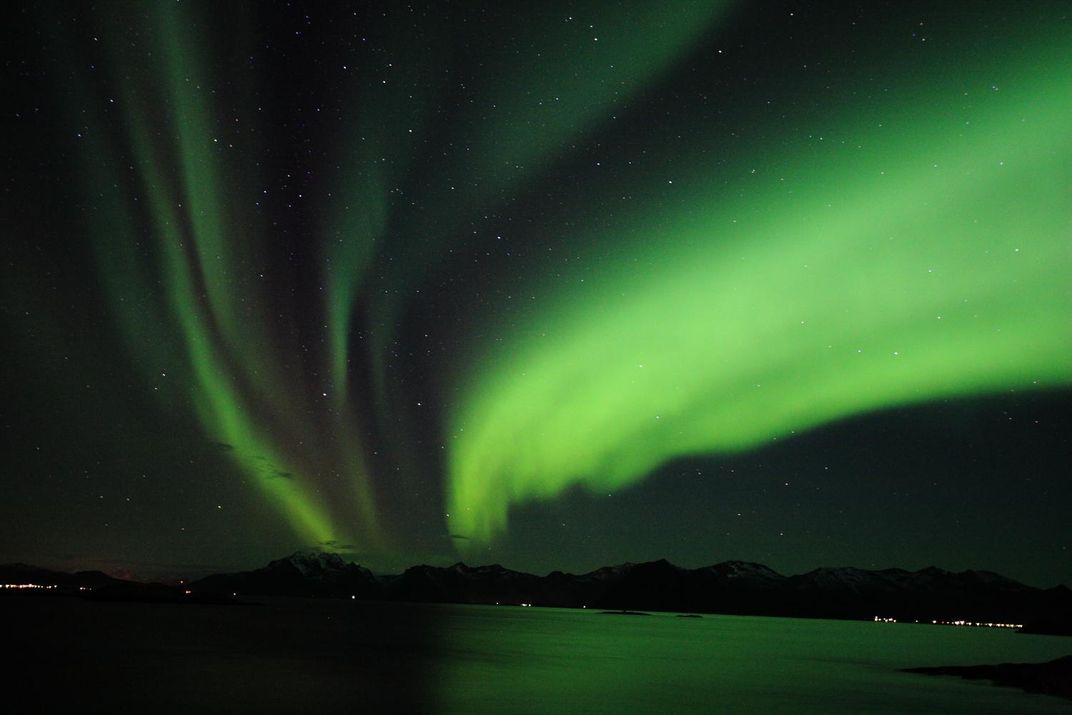
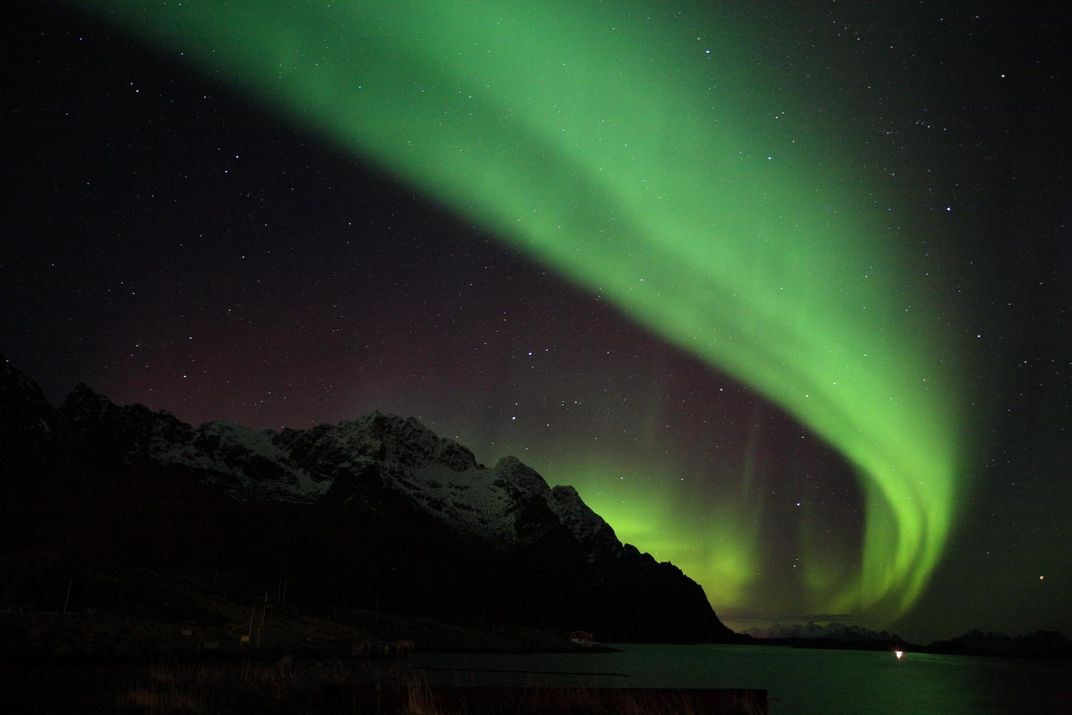
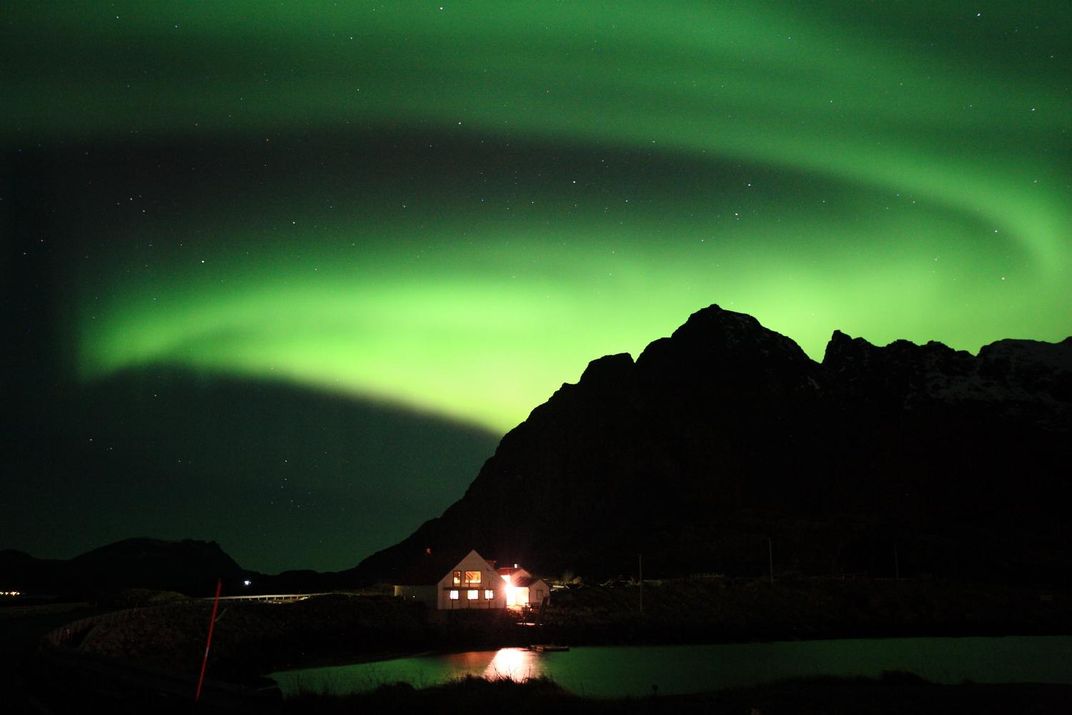
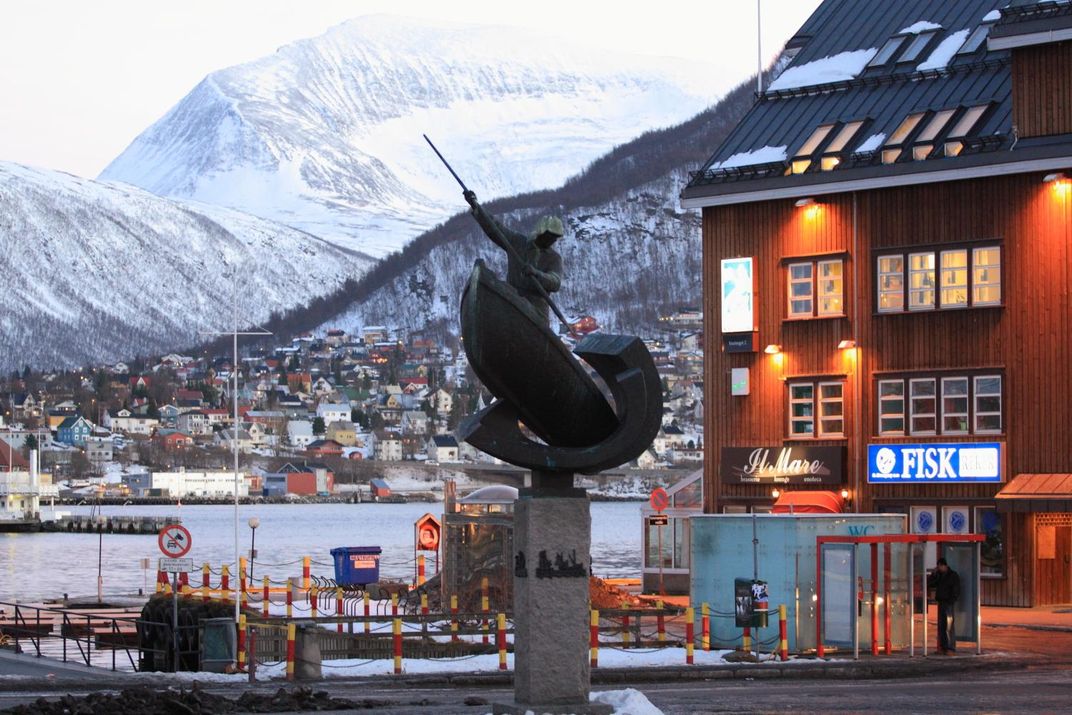
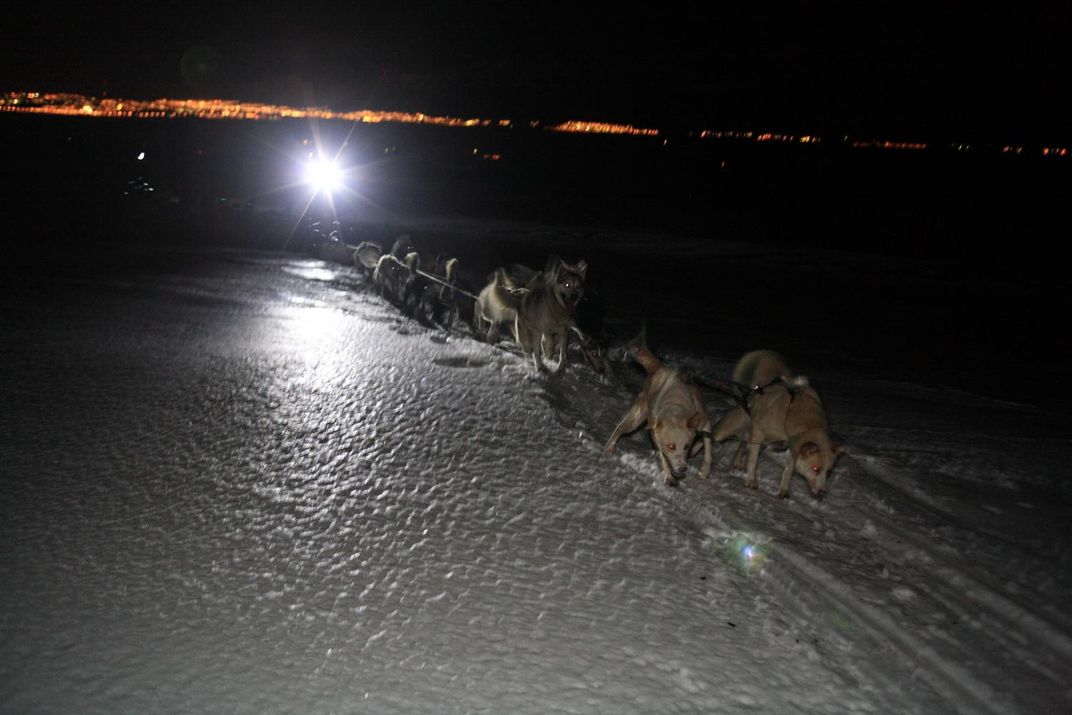
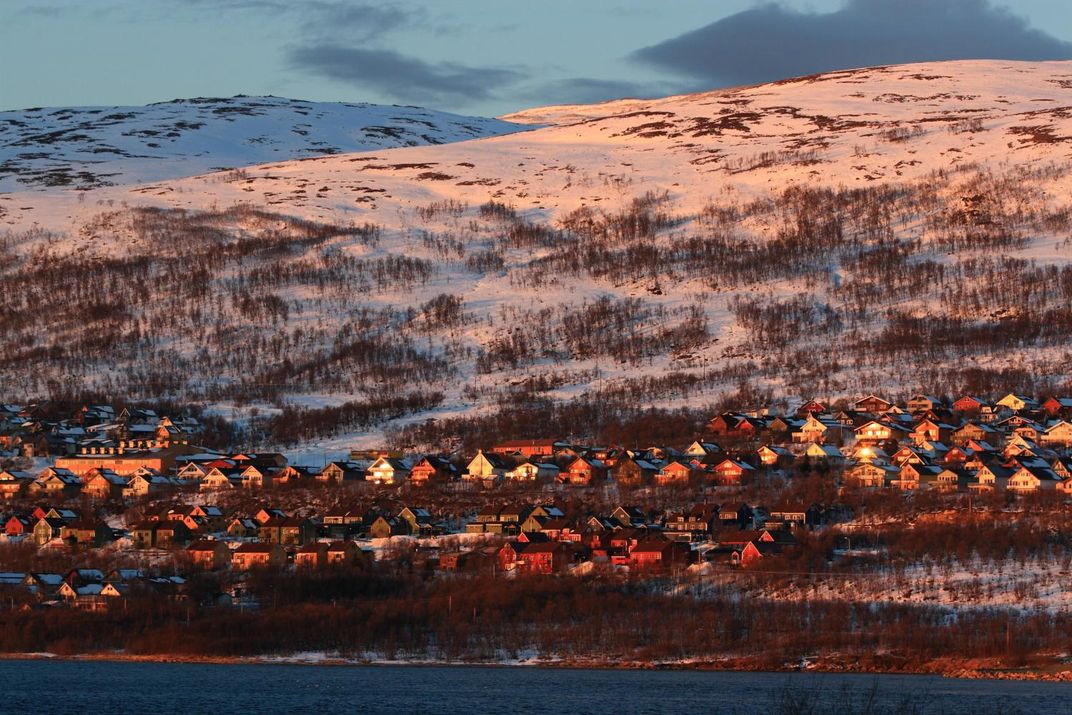
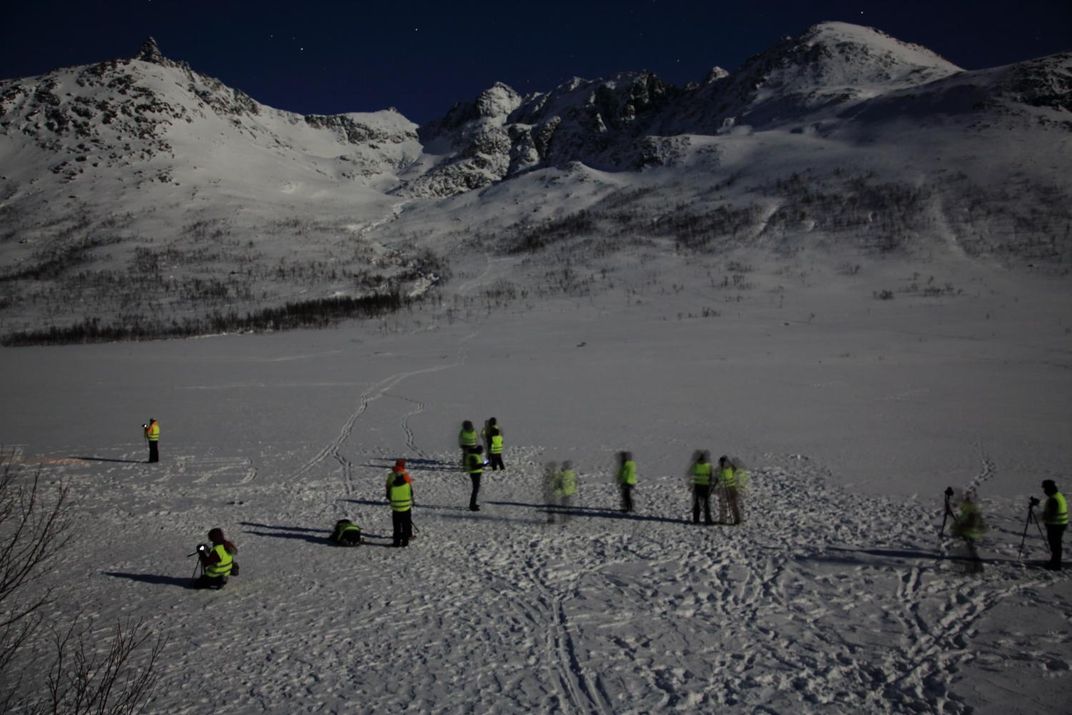
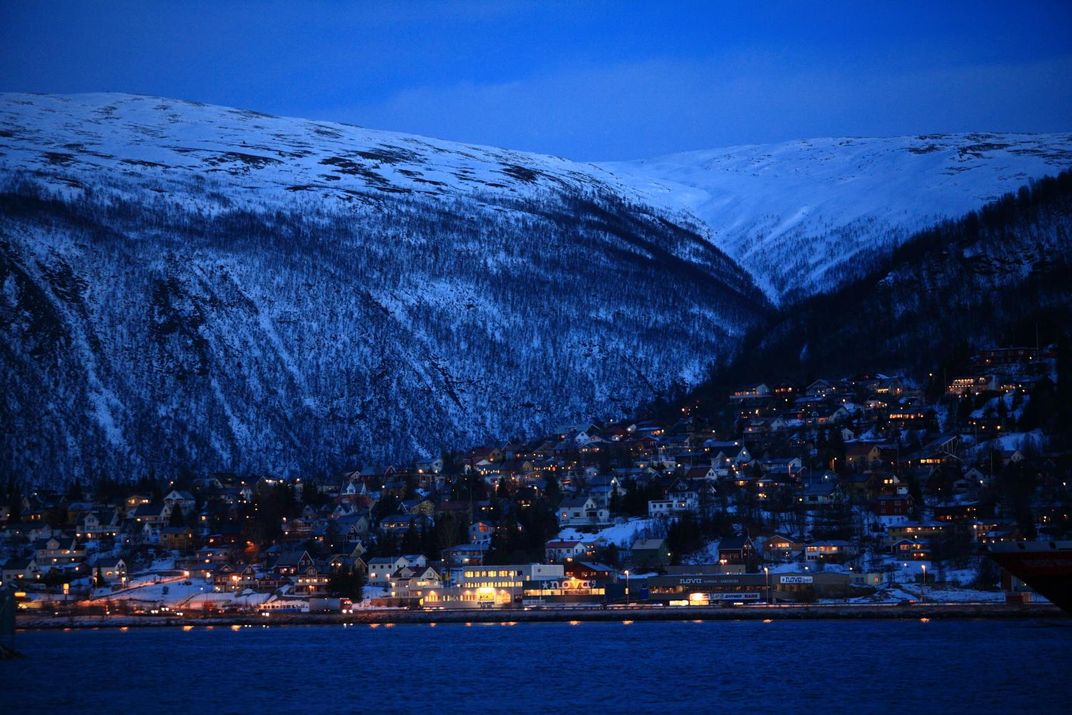
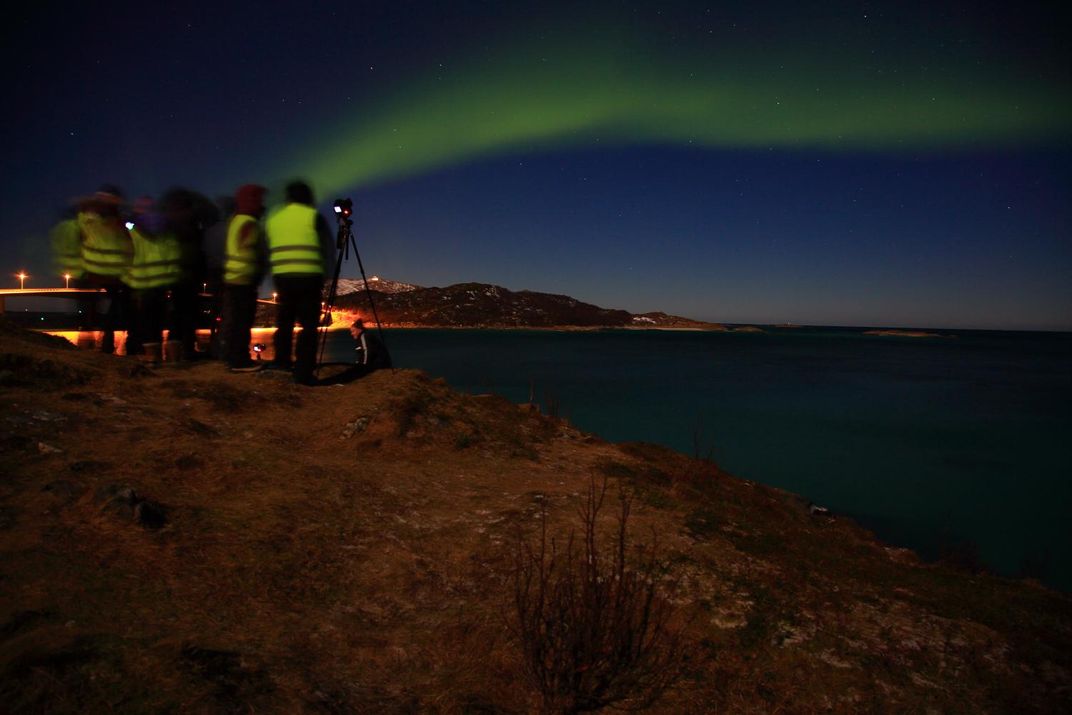
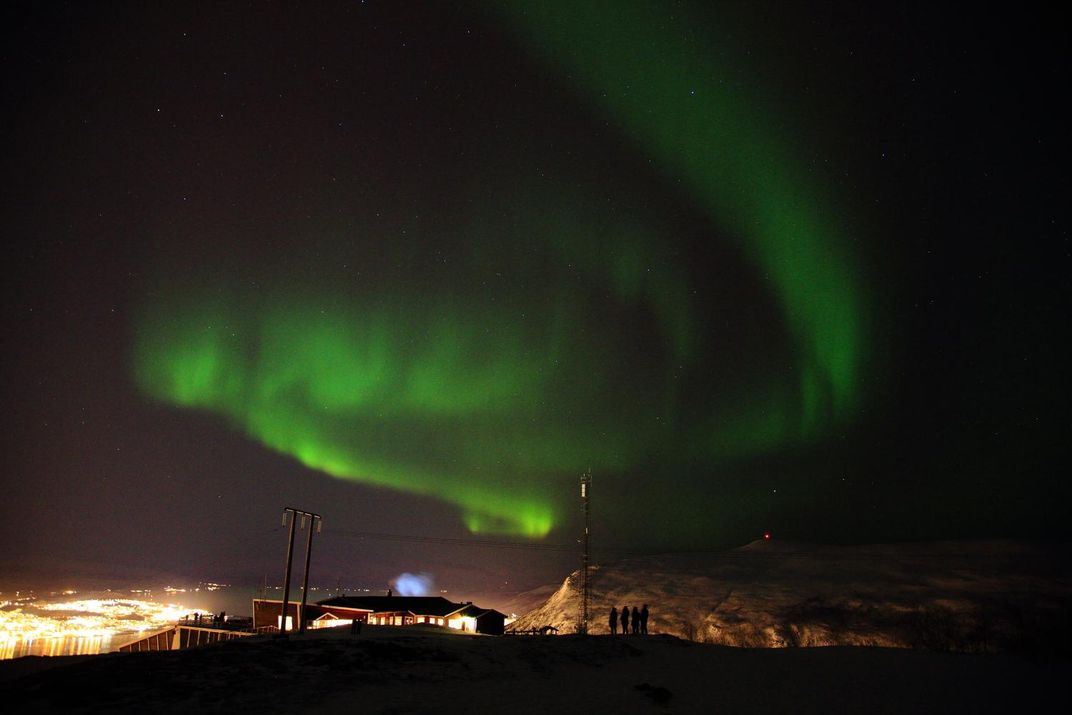
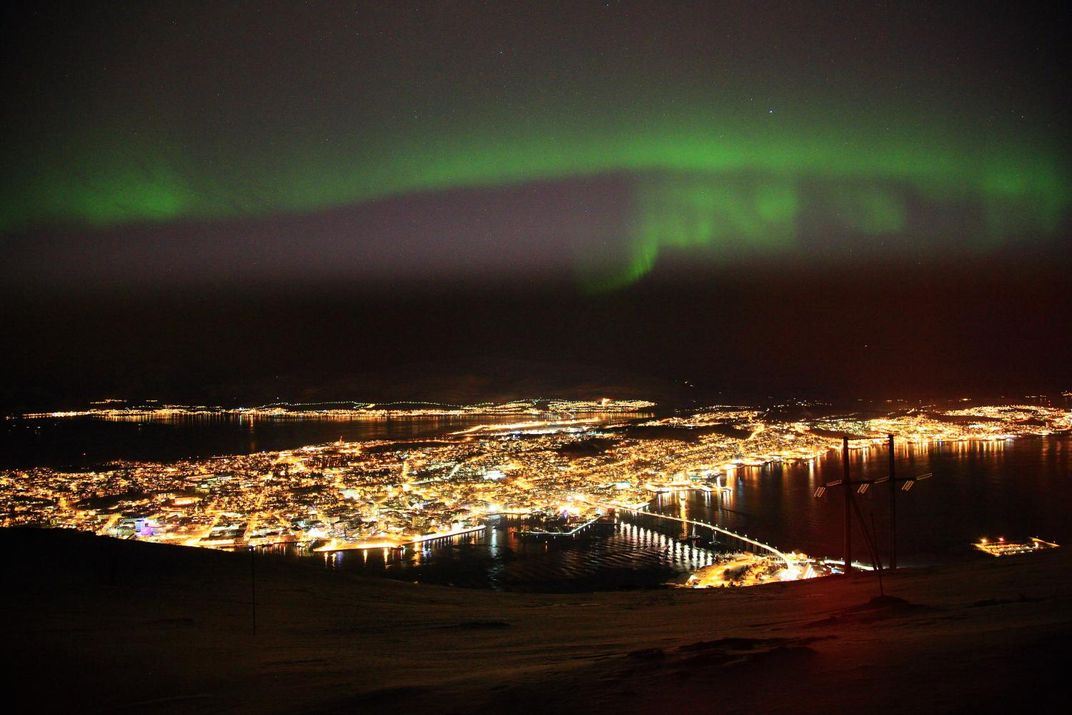
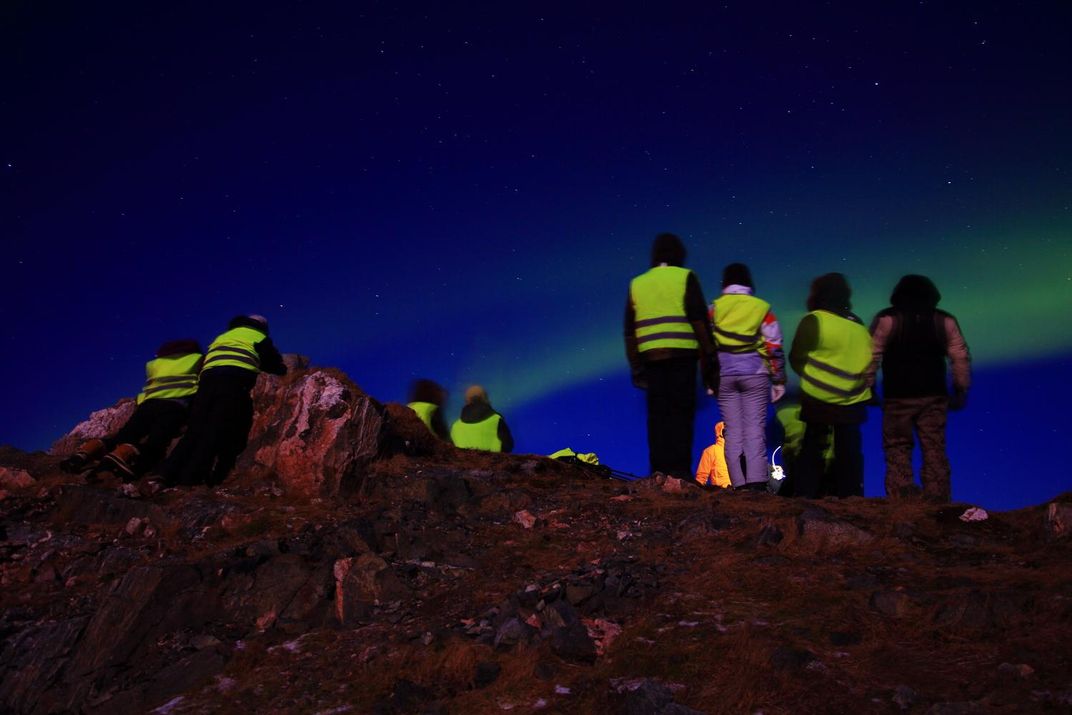
/https://tf-cmsv2-smithsonianmag-media.s3.amazonaws.com/accounts/headshot/Hyman_headshot.jpg)